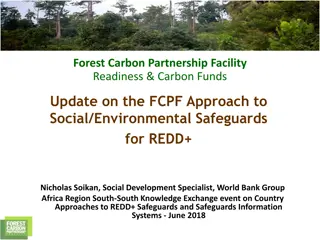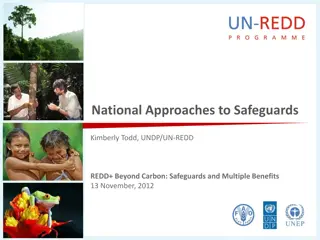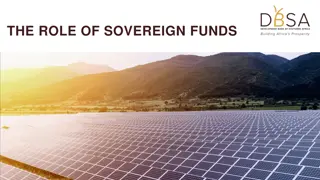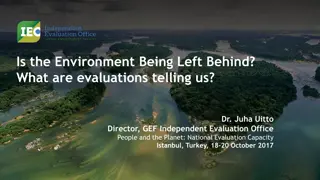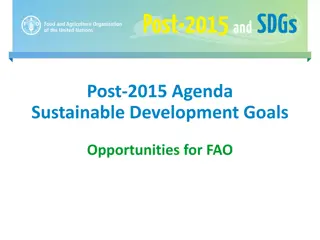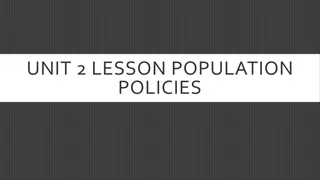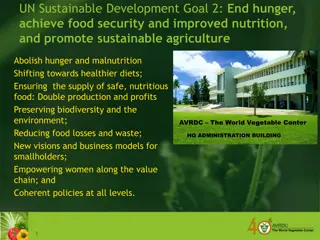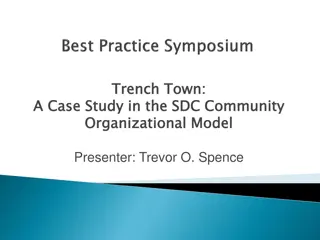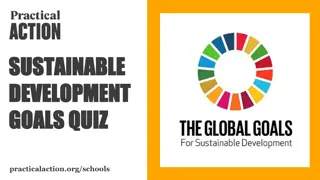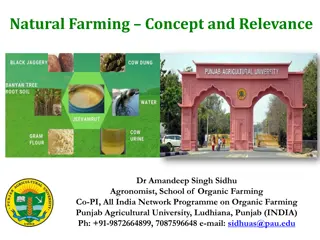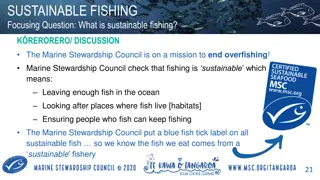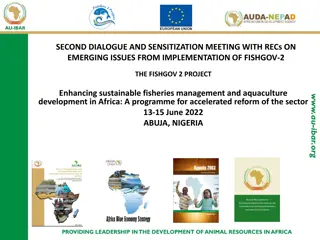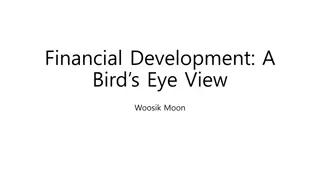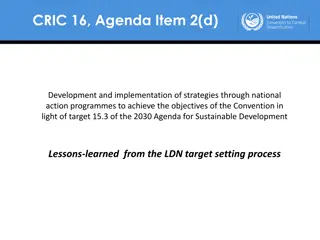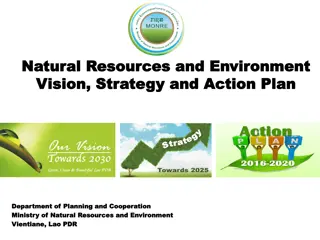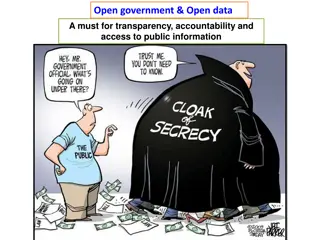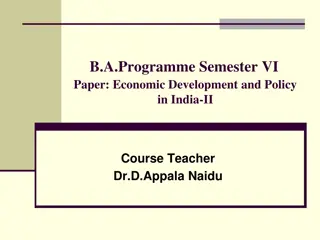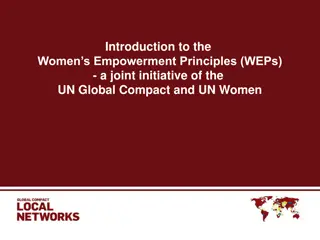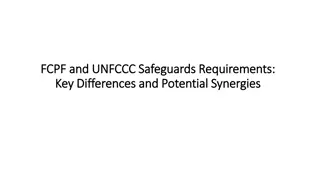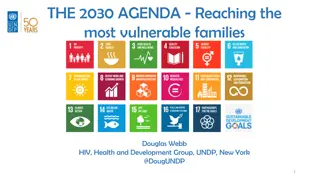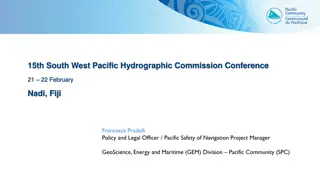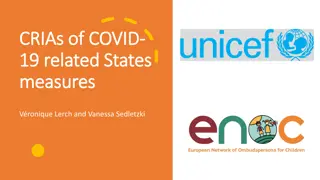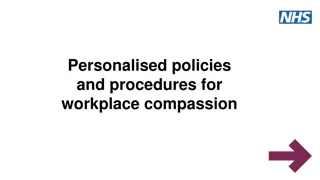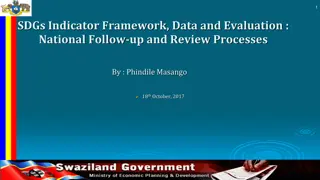Safeguard Policies for Sustainable Development and Impact: Overview and Objectives
The development of safeguard policies by the Bank aims to ensure that projects funded are environmentally and socially sustainable. These policies reflect core values, serve dual goals, and are crucial in the regional development agenda. Overcoming operational challenges in their implementation is essential for effective outcomes.
Download Presentation

Please find below an Image/Link to download the presentation.
The content on the website is provided AS IS for your information and personal use only. It may not be sold, licensed, or shared on other websites without obtaining consent from the author. Download presentation by click this link. If you encounter any issues during the download, it is possible that the publisher has removed the file from their server.
E N D
Presentation Transcript
Africa Centers of Excellence for Development Impact Environment and Social Safeguards Executive presentation Bangkok, September 2017 Abuja, October 22, 2020 Environmental Safeguards Accreditation Training: Bangkok January 18-22, 2016
Overview of the Banks Overview of the Bank s Safeguard Policies Safeguard Policies
The Bank has developed its safeguards policies to help ensure that projects proposed for Bank financing are environmentally and socially sound and sustainable, and thus to improve decision making 3
Safeguards Reflect Core Values
World Bank 10 +1 Safeguard Policies World Bank 10 +1 Safeguard Policies OP 4.01 Environmental Assessment - Triggered OP 4.04 Natural Habitats - Triggered OP 4.09 Pest Management OP 4.10 Indigenous Peoples OP 4.11 Physical Cultural Resources - Triggered OP 4.12 Involuntary Resettlement - Triggered OP 4.36 Forests OP 4.37 Safety of Dams OP 7.50 Projects on International Waterways OP 7.60 Projects in Disputed Areas + OP 17.50 - Disclosure of Information- Triggered
Safeguards serve the dual goals of ensuring sustainability and improving decision making Safeguards represent core values of the Bank Safeguards are important in the regional development agenda Safeguards functions as an integrated system involving Compliance, Quality Enhancement and Risk management We must overcome numerous operational challenges to effective implementation We all have a shared interest in making these policies work for development Summary
Objectives: Ensure that all proposed Bank projects are environmentally sound and sustainable Inform decision makers about environmental risks, through appropriate analysis of actions and of their likely environmental impacts Ensure adequate mechanisms are built into project design to address identified risks OP 4.01 Environmental Assessment Triggered when: One or more project activity has potential to cause adverse environmental impacts in its area of influence
Category A Impacts are sensitive, diverse, cumulative, irreversible and/or unprecedented Comprehensive EA and EMP Consultation on EA ToRs as well as draft EA Category B Impacts are site-specific, reversible in nature, less adverse than those of Category A Mitigation measures can be designed and implemented more readily More flexible EA requirements Consultation on draft EA Environmental Categorization Category C Minimum to no adverse environmental impacts No stand-alone EA required. Category FI (Financial Intermediary) Could include A, B and/or C level subprojects EA work required for subproject investments should be scaled to expected level of impacts
OP 4.01 Environmental Assessment Key Issues Umbrella policy ; cross-references other policies including social Varied instruments Strategic Environmental and Social Assessment, Sectoral EA, Regional EA, investment-specific EIA, environmental audit, frameworks (i.e. ESMF) EMP includes measures for compliance with all applicable environmental safeguards if no stand-alone plans are required
OP 4.11 Physical Cultural Resources Objective: Avoid or mitigate adverse impacts on physical cultural resources to avoid: Permanent reduction in local or national patrimony Loss of information about the past Loss for humanity in spiritual, social, and economic terms
Positive impacts and risks The Project will have many positive effects, which should be sustained over the long term The activities planned under the Project exclude any form of land or property acquisition or resettlement or physical displacement of populations It will help fight poverty and boost shared prosperity, as well as encourage investment in knowledge and skills in all sub-sectors of education It will make possible promising investments in regional infrastructure and economic integration, with a focus on initiatives to produce highly qualified human resources for priority growth sectors It will promote awareness among all national stakeholders about the environmental and social issues of Project activities and respect for the environment and the essential principles of sustainable development.
Main risks during the works Air quality, noise, water and sanitation, waste: Pollution and nuisance (noise, dust) due to the construction of facilities. Solid and liquid waste from construction sites Vegetation and soils : Uprooting of trees and cutting of shrubs made necessary by certain activities, with reduction of green spaces. Localized soil degradation Hygiene, health and safety of workers, residents and users : Accidents caused by construction machinery traffic and possible non-compliance with safety instructions. Risk of accidents around excavations and open trenches that are unreported, unmarked and poorly lit Natural risks : Some of the proposed developments could be affected by the risks associated with the effects of climate change - floods caused by heavy rains Risks of conflicts between the workers and local populations : Impacts on university campuses, with the likely restriction of vehicle and pedestrian traffic in the vicinity of construction sites, noise and dust-related inconvenience, space congestion caused by building materials Physical cultural resources : Some historic and archaeological buildings may be affected by the work and some excavations may reveal archaeological and historical remains
Main risks during the operation phase Potential negative risks should generally be due to: Inadequate design Lack of a system for the collection and transfer of waste, in particular domestic waste A possible lack of an effective, regulatory and adapted sanitation system Lack of regular maintenance procedures Insufficient enforcement of security measures Lack of appropriate measures for people with disabilities Inadequate stakeholders engagement Lack of effective grievance redress mechanism (GRM) in place
Quiz 1 Question: What is the role of the Bank Task Team regarding Safeguard Policies? A. Defines the project approach that best meets Safeguard Policies objectives. B. Monitors and ensures compliance with Safeguard Policies requirements during the project stages. C. Conducts Bank-required Environmental Assessment. D. Provides institutional oversight of Safeguard Policies compliance, quality control for Safeguard Policies efforts, and resolves conflicts. Answer: All of the Above
Quiz 2 Question: Question: The borrower is in the design stage of the project, and your team has a wide range of issues that must be addressed. Which of the following activities do you think should be addressed by the Bank team and the project team at this point? Options: Options: A: Identify and obtain appropriate Safeguard Policy specialists as an integral part of the Task Team. B: Examine the borrower s institutional capacity to implement Safeguard Policy requirements. C: Provide a clear summary of the borrower s Safeguard Policies monitoring and reporting requirements in the Bank s project documentation. D: Allocate Bank team resources, such as staff labor, required to support the project. E: Identify and evaluate consultants selected to conduct various environmental studies, as required by the Safeguard Policies. Answer: All of the Above
Quiz 3 A project you have been asked to explore may include a dam construction component that will flood a valley that is currently home to a traditional agricultural community that has been in place for several hundred years. Question1 : What Safeguard Policies do you think this project could potentially trigger that we will need to address? 1. Environmental Assessment ( O P / B P 4.01) 2. Natural Habitats ( O P / B P 4.04) 3. Forests ( O P / B P 4.36) 4. Pest Management ( O P 4.09) 5. Physical Cultural Resources O P / B P 4.11) 6. Indigenous Peoples ( O B / B P 4/10) 7. Involuntary Resettlement ( O P / B P 4.12) 8. Safety of Dams ( O P / B P 4.37) 9. Projects on International Waterways ( O P / B P 7.50) 10. Projects in Disputed Areas ( O P / B P 7.60) 11. Disclosure Policy Answer1 : 1,2,3,5,6,7,8, and 11
Quiz 3 contd Question 2: Based on this general description, what do you think would potentially be the Environmental Category of your project? A. Category A B. Category B C. Category C D. Category F I Answer2 : A Because your project will flood a large area, displace indigenous persons, and have a substantial impact on the existing environmental conditions, it would be designated as a Category A project that requires an in-depth E A.


